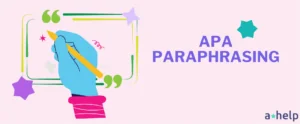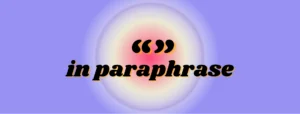Both in writing and content creation, two fundamental practices often come into play: summarizing and paraphrasing. While they seem kind of similar from the first glance, both serve different purposes. The difference is that summarizing simply condenses the key points while paraphrasing restates the content in a new form while keeping the original meaning. Knowing this, your chances to avoid self plagiarism consequences will be increased.

✅ AI Essay Writer ✅ AI Detector ✅ Plagchecker ✅ Paraphraser
✅ Summarizer ✅ Citation Generator
What Are Summarizing and Paraphrasing?
Summarizing involves condensing content to its key points and often reducing the length of the original material. A summarizer aims to distill the main ideas or themes of a text while avoiding less imporrtant details. The outcome is a ‘down-to-the-point’ representation of the source material that focuses on its main ideas, with minimal input from the author.
Paraphrasing, on the other hand, is the process of rewriting content while preserving the original meaning. It involves retelling the same information as the original text but using different words and sentence structures, sometimes followed by the ideas from the author. The length of a paraphrased passage might be similar to or slightly shorter than the original, but the focus is on rephrasing while keeping the original context. The practice is almost always better than theory: consider using a rewording machine to grasp the idea.
Key Differences Between Summarizing and Paraphrasing
The main difference between summarizing and paraphrasing is simple – their intent and application. Summarizing is ideal for providing an overview or a general understanding of the material without delving into specifics. It’s commonly used in situations where the reader needs to get the main ideas quickly, such as in abstracts, executive summaries, or when reviewing large volumes of texts.
Paraphrasing, however, is used when the details of the original content are important, but there’s a need to avoid direct quotations. This practice is often used in academic writing, content rewriting, and when trying to complex material (for example, when a teacher is explaining a hard-to-get concept to students).
Length and Detail
Another key distinction between summarizing and paraphrasing is the length of text and level of detail. Summarizations are typically much shorter than the original content, and focus only on central themes or ideas. Paraphrasing, although it may reduce the length a bit, tends to keep more of the original detail and complexity.
Contrast in Originality and Representation
When summarizing, the writer’s input is more ‘easily seen’ as they interpret and decide which elements are key to the overall understanding. In free paraphrasing, the writer’s role is to represent someone else’s ideas or information accurately but in a new form, while keeping the initial meaning.
Advantages of Each Practice – Which One to Use?
Summarizing offers several pros to students and content creators:
- It provides a clear overview of lengthy content.
- Easy to understand main points without going through a lot of text.
- It allows writers to break down complex ideas to be more manageable.
Paraphrasing also has some advantages to it:
- Helps to reuse content without plagiarism, if proper citations are in place.
- Clarifies and simplifies complex or technical information.
- Allows to integrate various sources into one piece of writing to better support the main idea.
If you don’t know which one to choose for your work, then we advise you to reflect on your overall writing goals. When the objective is to give an overview or present the core of an argument, summarizing is the way to go. And when the aim is to restate detailed information in a new way or to support your overall statement, paraphrasing is more suitable.
FAQ
Follow us on Reddit for more insights and updates.





Comments (0)
Welcome to A*Help comments!
We’re all about debate and discussion at A*Help.
We value the diverse opinions of users, so you may find points of view that you don’t agree with. And that’s cool. However, there are certain things we’re not OK with: attempts to manipulate our data in any way, for example, or the posting of discriminative, offensive, hateful, or disparaging material.